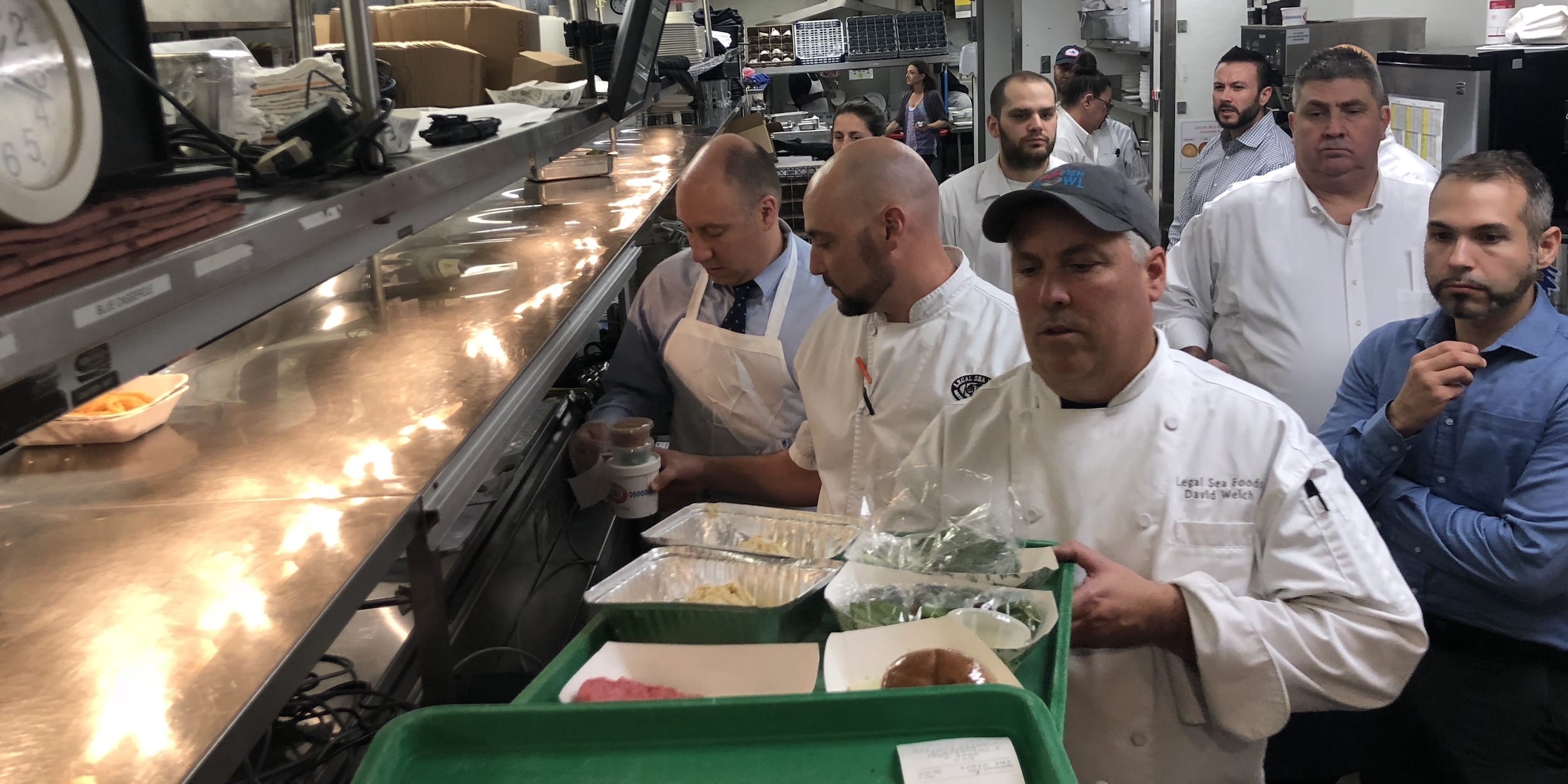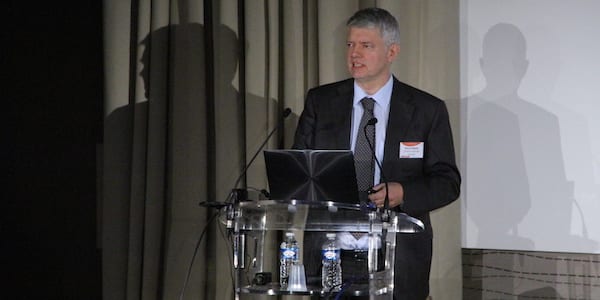
A bold lean experiment in one of our kitchens
FEATURE – The lean mindset Legal Sea Foods has developed is allowing the company to run bold, aggressive experiments that might some day reinvent the way their restaurant kitchens work.
Words: Jason Berkman, Director of Operations, Legal Sea Foods
Over the past four years, with the guidance of the Lean Enterprise Institute, Legal Sea Foods has tried several experiments in its restaurants. Thanks to lean thinking, we have become more efficient in a number of areas in different parts of our process. However, until last month our improvements had been small in scale and never attempted to connect the whole kitchen operating system together.
Things changed at the beginning of October, when we ran a pretty radical experiment in our Burlington restaurant, for our own learning and to understand what the future might look like. It was a reimagination of a kitchen, a drastic process change that made it a completely different environment compared to the one we work in right now.
The main challenge our restaurant experiences (any restaurant, really) is what we call the “wave” of orders coming into the kitchen, often at once, that is then distributed to the different stations. We have no control over this wave, because the guests come in whenever they want and expect to be served. In last month’s experiment, we were able to absorb the wave in the back of the restaurant, in a supermarket-type area that, working off of a takt time every 60 seconds (roughly the takt of orders we experience), sent ready-to-cook “kits” into the system for the cooks to prepare.
We worked hard to understand how much work was needed for the day (how much food had to be prepared), which allowed us to go from making big batches of food – which inevitably results in problems with wastage and freshness – to small batches delivered to the cooks just-in-time. In the traditional restaurant model, the cook receives the order and then has to perform a number of actions (from fetching ingredients to grabbing equipment) before he or she can actually start cooking – the real value-adding work. In the scenario we tried out last month here in Burlington, the information, tools and ingredients were all provided to the cooks at once, in the form of the kits. Cooks didn’t have to look at a piece of paper or a screen to know what they had to make; the food itself became the information. This reduced the level of stress cooks normally experience when he or she has to make quick decisions in the face of a barrage of orders coming in all at once, and it also saved time.
Check out this video, in which our coach Josh Howell explains the mechanism we experimented with:
It felt like we had the ability to control the flow of information and work coming into our kitchen, and focus fully on just cooking each and every dish.
WHAT MADE THE EXPERIMENT POSSIBLE
Our restaurant has been working with lean since January this year. We “pulled” it from the rest of the business after seeing the impact it had had on other Legal restaurants.
We began by trying to understand the concept of “value-added work” as it applies to our processes, which resulted in – among other things – a kaizen event to develop a replenishment system for the front of the house. When we were done with that improvement, however, we realized it is actually the dish room that impacts the work at the front of the house. So, we changed our focus and did a lot of PDCA there, coming up with a one-piece (or one-rack) flow of items into and out of the room.
We were doing rapid experimentation, and we were making improvements, but our coaches from LEI then explained that we needed more structure in which we went about changing the restaurant. They introduced us to A3 thinking, organizing coaching sessions on a regular cadence to help us through that learning process. Rather than trying a million different things without really knowing why, we started to really think through what problems we needed to solve, and why. We began to dig deep into problems, getting all the way to their root causes. (That’s when I better understood what lean thinking is about.) We dove into the A3s, focusing on four sections of the restaurant – host stand, replenishment, alcoholic drink service, and bussing and resetting tables – and we have been working on them ever since. We are now in the countermeasure phase, and we feel that the improvement of these four areas will provide a better experience for our guests.
We are developing our problem-solving capabilities, and thanks to lean we look at things a lot differently these days. Now there are challenges to confront everywhere and all the time, and lots of work to be done; in this new, lean world, there are endless opportunities.
THE AUTHOR

Read more


VIDEO INTERVIEW - We spoke with Toyota Motor Europe's CIO at the Lean IT Summit about hoshin and IT, the application of the agile methodology, and the power of coaching.


OPINION - Managers who want to hold on to their hierarchically controlled businesses and defend them against creativity and change are not protecting their organizations, but putting them at risk.


COLUMN - What does lean do for people in your organization? This column explores how their way of thinking changes as a culture of continuous improvement and problem solving takes root.


FEATURE – In lean, we talk about PDCA all the time… but do we actually practice it as we should? The authors discuss what makes for successful continuous improvement.

